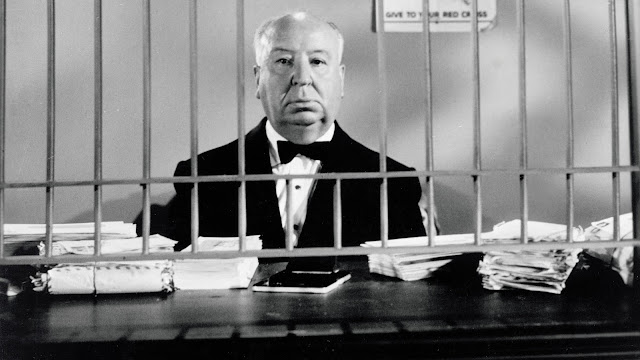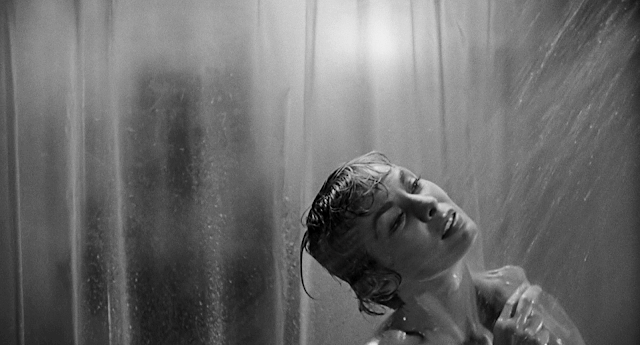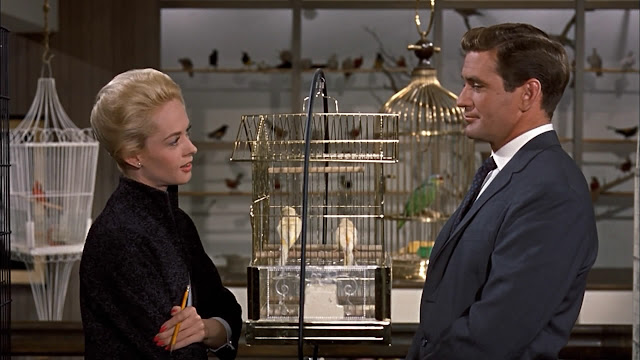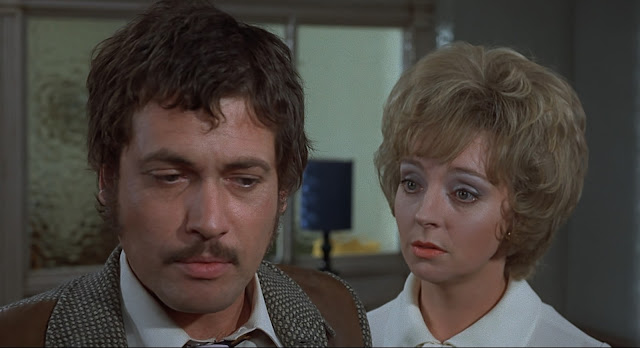Crime, mystery, suspense. 15 BEST ALFRED HITCHCOCK MOVIES

There is no other director like Alfred Hitchcock who has had such a huge impact on future generations. Today, virtually any gripping film can be called a hitchcockian thriller and everyone knows what it’s about. It’s as if he was the originator of the genre. He, however, from the thriller, which was a lower-class genre, brought out all the quintessence, shaped it so strongly that the genre began to be associated with a real cinematic experience, that is, a generator of suspense, emotion and fear. It’s difficult to count the director among the masters of detective fiction, because detective fiction is associated with puzzles, and Hitchcock wasn’t interested in puzzles. He was concerned with the effect of suspense, which is the hallmark of a thriller. In his view, suspense is not achieved with final twists, but by grading the tension throughout the film, thus laying out the various cards slowly, even if it means giving the identity of the murderer too early.
Norman laughed, turned away, and then fell into a darkness deeper and more plunging than the swamp.
> Robert Bloch, Psycho
13. Psycho (1960)

This film is more than an example of the director’s genius. After all, Psycho is proof that Hitchcock was ahead of his time. In his previous two films, the director also admittedly showed an out-of-the-box approach, but this 1960 masterpiece was a 180-degree turn. Wanting to top the success of Diabolique (1955), the master of suspense reached for old tools, which he improved, creating a seemingly archaic, but in fact pioneering thriller. Inspired by the character of Ed Gein and the novel by Robert Bloch, Norman Bates was created. Today already ranked among the top film psychopaths, he also has much in common with Cody Jarrett from White Heat (1949) – both are paranoids with a mother complex. The inexperienced Joseph Stefano was hired to write the script. The cinematographer was John L. Russell, with whom Master worked on the series Alfred Hitchcock Presents. Graphic designer Saul Bass, on the other hand, not only designed the opening credits, but also helped layout the shot-by-shot of the plot’s crucial shower murder scene. Composer Bernard Herrmann, meanwhile, extracted such a high key from the violin that some musicians had trouble recognizing the source of the sound. All contributed to a stunned audience during the screening.
The film has a very strong emotional impact and is incredibly evocative, but at times also very subtle. The director deals with the theme of guilt and punishment, creating a suspenseful psychological thriller, in which the plot moves slowly, twisting more and more into darker areas. It’s hard to forget Anthony Perkins in the role of Norman Bates – his madness hides behind a mask of normality, but his facial expressions, gestures and glances reveal disturbing nuances of character. Janet Leigh is also excellent, but unfortunately her role is underrated today. Back in the day it’s her who received more recognition. This is evidenced by a Golden Globe and an Oscar nomination, which, in the absence of an honorable mention for Perkins, looks rather bizarrely from today’s perspective. However, there is no point in deciding who was better, because this film is a perfect example of masterful coordination. Everyone involved in the production had a major impact on it. The craftsmanship of the director consisted mainly in the fact that he was able to harmonize all the elements into a single whole, without neglecting any aspect.
14. The Birds (1963)

For the third time, Daphne du Maurier provided Hitchcock with material for a film. Using her intriguing short story, the director wanted to make an apocalyptic horror film about a threat coming from an unexpected direction. As in the case of Psycho, he intended to make a strong impression on the audience, almost a shock, but using completely different tricks. It’s no longer man who poses the threat, but nature in the form of inconspicuous-looking birds. This idea involved the use of innovative effects, not only visual, but also sound. The music is a cacophony of bird sounds, created by Remi Gassmann and Oskar Sala, experts on an electro-acoustic instrument called a trautonium. Bernard Herrmann helped create the unique sound layer. From the visual side, meanwhile, opted to combine shots featuring real birds (trained by Ray Berwick) with numerous special effects. Two artist-painters from Walt Disney’s stable – Ub Iwerks and Albert Whitlock (whom Hitchcock still knew from his British period) – prepared the designs, from which more than three hundred trick shots were created. The screenplay was written by Evan Hunter, author of numerous crime novels under the pseudonym Ed McBain (many of his works were published under the giallo banner). Hitchcock’s The Birds is a film of colossal importance for the history of cinema – especially in the 1970s this could be felt when more and more films about aggressive animals were made.
15. Frenzy (1972)

Many people consider Alfred Hitchcock’s last outstanding achievement to be Marnie (1964), a psychological thriller with Tippi Hedren and Sean Connery. Indeed, the film is impressive, but in my opinion, much better is the penultimate work of the Master titled Frenzy. The British filmmaker shot this work in his native London, using an idea he had already reworked in the silent film era – he made then The Lodger: A Story of the London Fog (1927), inspired by the Jack the Ripper murders. Based on a novel by Arthur La Bern and a screenplay by Anthony Shaffer (twin brother of the author of Amadeus), Hitchcock was once again able to show his professionalism. The 1970s was already a time of harsher, more controversial cinema. The director was aware of this, which is why his film about a murderer of women isn’t as subtle as items from the classics of cinema. Admittedly, there is a certain exquisiteness that reminds us of classic English detective stories, but the gallery of characters is closer to brutal reality than to cinematic tradition. The protagonist doesn’t inspire as much sympathy as the characters of James Stewart or Cary Grant, which isn’t the fault of the actor, but the type of the character. For it’s a sociopathic personality. In turn, the women are far from Grace Kelly or Tippi Hedren – they lack that magnetism. The main antagonist is a completely amoral character, and the macabre humor that is an important component of the show introduced a certain discomfort. The film was positively reviewed by critics. Quite rightly, as it’s a beautiful farewell of the director to the genre to which he devoted almost half a century of his life.
BONUS
Alfred Hitchcock Presents (1955-1962)

In the introduction to the pilot episode, the Master himself describes the project as a “series of stories of suspense and mystery”. These are moralizing stories typical for television of the time. This doesn’t mean that in every episode the criminal was unmasked. If the ending was ambiguous, then Hitchcock as the show’s host had to add a comment in the epilogue suggesting that the criminal met his deserved punishment. In the first episode (Revenge), the theme is the futility of revenge, which is similar to the real crime and deserves similar punishment. However, I would like to single out two other episodes directed by Hitchcock.
The Case of Mr. Pelham (1955), starring Tom Ewell, protagonist of The Seven Year Itch (1955), is an adaptation of a short story by Anthony Armstrong. The bizarre story of Mr. Pelham, an unassuming-looking man whose life is turned upside down when he learns of the existence of a mysterious double. The episode (based on a script by Francis Cockrell) is quite unusual for this director, as one senses the interference of supernatural forces, as in the hidden invasion films regularly shot in the 1950s. Essentially, it’s a touching tale about the fear of losing one’s identity and control over one’s life. However, the story has an amusing conclusion – in the epilogue, the show’s host, taken away by two types, shouts: “I’m Alfred Hitchcock and I can prove it”.
The second episode I’d like to highlight is titled The Perfect Crime (1957) and is an extremely rare specimen, as it’s Vincent Price’s only appearance at Alfred Hitchcock’s. In this 25-minute episode, the accomplished actor plays a cocky detective who is convinced of his infallibility. But a man tries to prove to him that he recently sent an innocent man to his death. The script (based on a story by Ben Redman) was written by Stirling Silliphant, who also wrote one of the most unusual episodes in the series (The Glass Eye, directed by Robert Stevens). The episode, The Perfect Crime, is a story about how murder cannot be something perfect, because the very idea of taking someone’s life is the product of an imperfect mind, unable to control its emotions. It’s also a story about how overconfidence weakens one’s sense of observation, causing one to miss important details that can completely change one’s perception.

